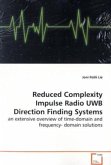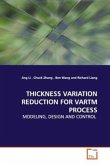This study examines the role of the direction of a
fall on neuromuscular response. Electromyography
sensors were positioned on the erector spinae of
twenty subjects. Falls, simulating slips, occurred
in the anterior, posterior, and medial-lateral
directions. The average activation curves for the
four different fall directions displayed different
characteristics. Observations were supported by
principal component analysis (PCA). PCA coefficients
related all fall directions to a single reflex-like
response. Analysis of variance on the coefficients
demonstrated that anterior falls had a significantly
(p0.05) stronger reflex-like response than posterior
falls. There was also a significant (p0.05)
difference for the interaction between side of the
erector spinae and fall direction for the
medial-lateral fall directions. Here the
contra-lateral muscle had a stronger reflex-like
response than the ipsi-lateral muscle. Possible
reasons for the observations could be to increase
time available for active responses or decrease the
energy transferred if the head impacted the ground.
fall on neuromuscular response. Electromyography
sensors were positioned on the erector spinae of
twenty subjects. Falls, simulating slips, occurred
in the anterior, posterior, and medial-lateral
directions. The average activation curves for the
four different fall directions displayed different
characteristics. Observations were supported by
principal component analysis (PCA). PCA coefficients
related all fall directions to a single reflex-like
response. Analysis of variance on the coefficients
demonstrated that anterior falls had a significantly
(p0.05) stronger reflex-like response than posterior
falls. There was also a significant (p0.05)
difference for the interaction between side of the
erector spinae and fall direction for the
medial-lateral fall directions. Here the
contra-lateral muscle had a stronger reflex-like
response than the ipsi-lateral muscle. Possible
reasons for the observations could be to increase
time available for active responses or decrease the
energy transferred if the head impacted the ground.








